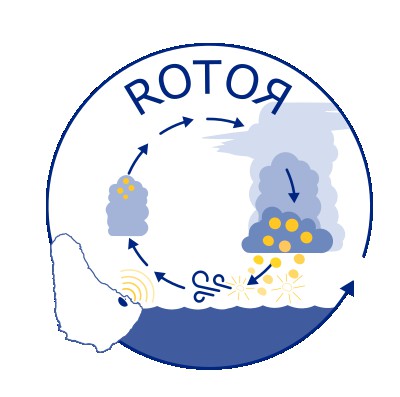ERC starting grant
Rain and cloud Organization in the Trades using ObseRvations and models (ROTOЯ)

Our climate fundamentally depends on the abundance and behavior of its smallest clouds: shallow trade cumulus clouds. Their response to climate change is a major uncertainty in climate projections, with one of the most pressing but least understood questions being: What is the role of mesoscale convective organization in trade cumulus feedbacks? Rain affects convective organization through its re-evaporation, which triggers downdrafts and cold pools. Cold pools can create large ‘cloud holes’ surrounded by cloud arcs. But how the size and lifetime of cold pools link to the initial rain evaporation and downdrafts, and how they influence cloud cover and thus the radiative budget is unclear. Critical reasons for these knowledge gaps are a lack of rain process observations and the fascinating range of scales involved.
ROTOЯ is driven by the opportunity for ground-breaking advances in observing, simulating, and understanding organized precipitating shallow convection to elucidate the role of rain and cold pools for climate. Our goal is to answer three questions: (i) What is the impact of evaporation, downdrafts, and cold pools on the trade-wind layer equilibrium state? (ii) Under what conditions do cold pools organize or disorganize shallow convection? And (iii) do cold pools increase or decrease total cloud cover in the trades?
To answer these questions, we will create a multi-year dataset of rain evaporation, downdrafts and cold pools by applying new remote sensing retrieval techniques to existing trade cumulus observations from the Barbados Cloud Observatory and the EUREC4A field campaign, and new data from the upcoming ORCESTRA campaign. Combined with cutting-edge ICON simulations using the new super-droplet model CLEO, we aim to fundamentally improve our understanding of how organized shallow clouds may change with warming and the implications this has for the radiative budget and hydrological cycle.
